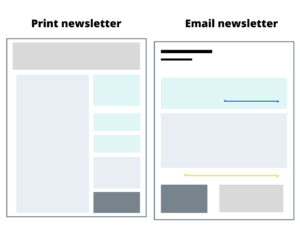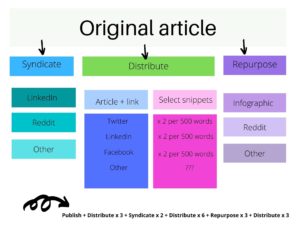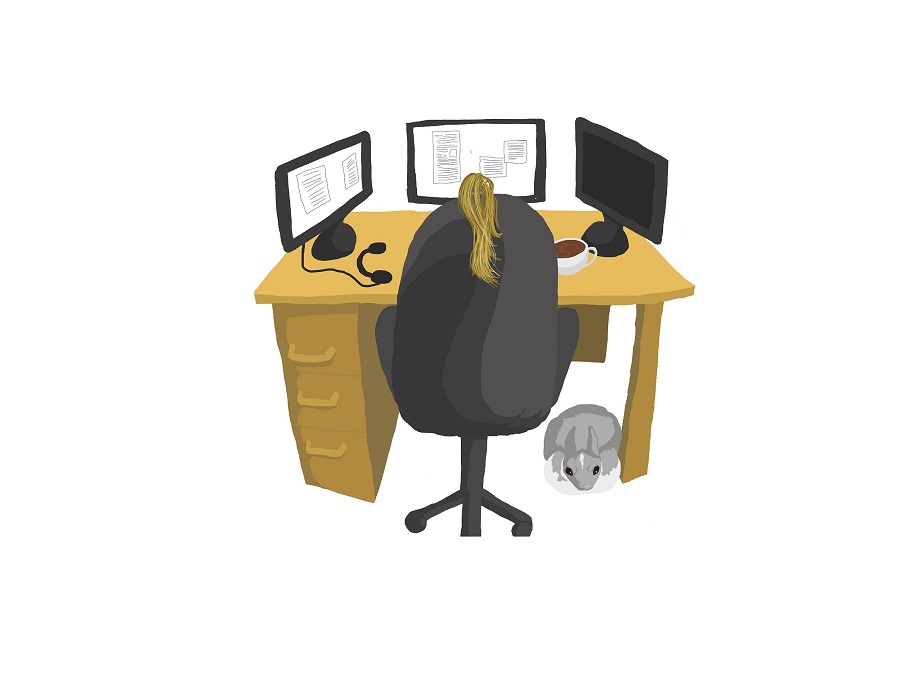Have you been thinking about adding a newsletter to your content marketing mix? The newsletter format has become increasingly popular in recent years as design apps and email distribution services have lowered their costs of production. But, it still takes time and effort to consistently produce newsletter content. So, is it worth the effort for your business?
Why a newsletter?
Newsletters are a way to promote your business without imposing on your audience.
Unlike advertisements that focus on asking someone to make a purchase or take some other action, newsletters are a softer, gentler approach to marketing. They include content that informs or entertains your audience while keeping the self-promotion to a minimum. Sure, your newsletter may contain promotional content or a call to action, but that shouldn’t be its primary focus. The give-instead-of-take nature of newsletters helps you keep in touch with your customers and grow your business.
The benefits of publishing a newsletter for your business include the following:
- Overcoming the “out of sight, out of mind” challenge. Modern consumers are busy, distracted and overloaded with information. Amid all that hustle and bustle, your business can easily be forgotten. Each time you send a newsletter to the people on your mailing list, you are giving their memories a little nudge.
- Controlling your message’s environment. When you publish information on social media or pay for online ad placements, you give up control over the environment in which your message is seen. But, because you own the medium, when someone reads your newsletter, they see only what you want them to see. You control the context.
- Engaging authentically with your audience. Newsletters enable you to reveal your business’s expertise, values and personality to your customers through the content you publish in them. Your business’s newsletter may include practical tips and advice, opinion pieces about industry or community news, entertaining anecdotes or even memes–it’s up to you. This kind of authentic communication strengthens your relationships with your audience and fosters customer loyalty.
Are you ready to add a newsletter to your marketing mix? Here’s a look at what you’ll need to get started and how you can make the most of your investment.
The basic components of a newsletter
The exact format and content of your newsletter will depend on your budget, goals and audience needs. But, in most instances, your newsletter will include two or more of the following components:
- Branded Boilerplate. Each newsletter should include your name and contact information. This is an important element of your newsletter as it keeps you top of mind and makes it easy for readers to contact you when they are ready to do business.
- Feature article(s). Depending on the length of your newsletter and the interests of your audience, you’ll have one to three feature pieces per newsletter. These pieces will each be 300 to 700 words in length and deliver value-adding information to your reader. Your feature articles can cover a single theme (e.g., three articles about tax matters) or be about separate topics (e.g., one article about taxes and a separate article about investing).
- Short snippet(s). These are shorter segments that can convey short pieces of information such as important dates or events, facts or statistics, trending news or other relevant data (e.g., a definition, an upcoming event date or a fun fact related to your industry). Snippets are usually 100 words or less. You can vary your snippets for each newsletter or use the same categories in each newsletter
- Promotional copy. Subscribers expect a newsletter to add value by informing or entertaining them. But, you can still include an ask now and then. Use promotional copy to announce an upcoming sale or share a discount code. Sometimes, newsletters are sponsored by third-parties and their promotional texts or links would appear in this section of your newsletter.
Email, print or both: Choosing your newsletter format
Many of today’s newsletters are sent via email. This format is inexpensive to produce and distribute. However, the low cost of entry for this format also makes email newsletters very commonplace. The result is that people’s emails are overloaded with newsletters and they are often deleted without being read. Cost aside, email is an attractive choice because performance metrics for email newsletters are readily trackable. For each email newsletter, you’ll be able to track not only the open rate of the emails but also the click-through rates for any included links. And, as a digital product, you can easily include video, audio or links to additional content in your email newsletter.

Print newsletters are more expensive to produce and send than their digital counterparts, but they have the potential to linger longer in your reader’s possession. One major downside of printed newsletters is that it is difficult (nearly impossible) to determine if they have been received and read. You have no direct means to determine if your print newsletters are being opened or discarded as “junk” after they’ve been delivered. Unique coupon codes in each newsletter or intake surveys that ask where your clients or prospects learned about your business can help you keep better track of your printed newsletters’ open rates.
Extend your newsletter’s reach with multiple formats and repurposing
Once you’ve created value-adding content, use it to the max. Reformat and repurpose each piece to reach different audiences at different times. For example, you might send a print newsletter to some of your audience and an email version to others. Later, publish the newsletter on your website and share the link on social media. Try out different formats for different recipients. Your email newsletter doesn’t have to be identical to your print newsletter. To keep your emails shorter, publish the feature articles on your blog, then direct readers to them with an introduction and link in your email.
Get extra mileage from your newsletter content through repurposing it as well. In addition to publishing the feature articles on your blog, syndicate the articles on other sites such as LinkedIn or industry-related publishers. The snippets from your newsletter can be repurposed as social media posts.

Finally, think about other types of content that you can create using the information you’ve shared in your newsletter.
Did your feature article include a set of statistics that you can convert into an infographic? Maybe you defined a set of industry-related terms that you could reshare in an audio recording or explainer video. Did you create a themed newsletter that could also serve as an evergreen brochure?
Publishing your content in multiple formats and locations maximizes its reach and your brand awareness.
Working with me to create a newsletter for your business
I create newsletter content for businesses. When I do the writing for you, you save time and get copy that is written to inform and engage your ideal audience. How does it work? In brief, you make some decisions, we discuss some ideas and then I write.
Here’s the longer version.
Covering the basics
First, you’ll choose the format for your newsletter, how long you want it to be and which components you’d like to include. You’ll also need to decide how often you want to send your newsletter.
Next, we’ll start working on a content calendar. For this step, I like to create a list of topics and ideas from which we can draw inspiration. We’ll develop this list together in a shared document so that you can add or delete topics, note your preferences and share resources with me. This is not a static document. You can continue to add ideas or new information. That’s the “content” part of the content calendar.
Then, we’ll schedule the various topics for each planned newsletter. That’s the “calendar” part. This step allows you to make sure you present your audience with an interesting mix of topics over the course of the year and that seasonal topics get covered at the relevant times.
Creating the content
This part is as easy (for you) as you want it to be. Once we’ve chosen a topic, I’ll do the research and write a draft article for you to review. Or, if you prefer, you can provide me with a foundation to start the article. You could give me a bulleted list of talking points, a written outline, a voice or video recording with your thoughts on the topic or write out a complete draft. I’ll work with you to bring your message to life.
Once the feature article or articles are ready to go, I’ll add any additional snippets or other content to your newsletter and make sure it is formatted for either print or email. (You’ll be responsible for uploading the content to your email service provider for email distribution and will need to send a test copy to review the formatting.)
How much does all this cost?
The cost for me to create a newsletter with at least one feature article begins at $1000. Your total cost will depend on the length of your newsletter, its format and the types of content you choose to include. We’ll discuss each of these factors in advance and lock in a price before I begin work. Once I create your newsletter content, it becomes an asset that you can reuse and repurpose across marketing channels.
of course, I’m not the only person who knows how to create a newsletter. If you are ready to give newsletters a try, choose a writer who fits your budget and give it a try. Opportunity awaits!
